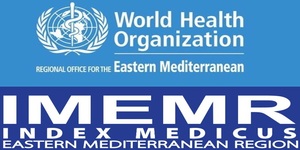Effectiveness of the Instructional Program on Physical and Psychological Status of Patients Undergoing Upper Gastrointestinal Endoscopy at Baghdad Teaching Hospitals
DOI:
https://doi.org/10.36321/kjns.vi20151.3160Keywords:
Effectiveness, Physical status, Psychological status, patient,, Upper gastrointestinal endoscopyAbstract
Objective: The present study aims to investigate the effectiveness of instructional program on the physical and psychological status of patients undergoing upper gastrointestinal endoscopy.
Methodology: A quasi-experimental study was conducted in the outpatients and medical unite for the Gastroenterology and Herpetology unit in Baghdad teaching hospital and Al-Kindy teaching hospital Imamein Kadhimein Medical City for the period of the 5th of January 2014 to 17th August 2014. A non-probability sample was selected and composed of 100 patients divided into (50 patients within the study group who received the instructional program about upper gastrointestinal endoscopy and 50 patients within the control group were not exposed to the instructional program the instructional program was developed by the researcher and consisted of the information domain and trained domain and giving at least 7 day before the endoscopy procedure. A questionnaire was prepared for evaluating of patient physical status (through measuring the intensity of pain during the procedure by visual analogue scale and patient discomfort by (retching, attempt grabs the endoscope, body movement and moaning) and measuring the pulse rate and oxygen saturation blood pressure) during the procedure. While evaluating the psychological status (through measuring (state and trait anxiety) before and after the procedure. Identified validity of the questionnaire and instructional program by a panel of 28 experts, and identified the reliability of the search tool by adoption of a pilot study. Data were analyzed using descriptive statistics and inferential statistics.
Results: The results of the study in regards of physical status (measurement of the pain intensity) there is a high significant difference between the study group and the control group, while the measurement of the discomfort also a highly statistically significant were founded between the study and the control group related retching, attempt grab the endoscopy, the movement of the patient's body and moaning except retching were no statistical observed. In addition the study revealed statistically significant between the study and control groups when measuring the pulse rate and oxygen saturation except measuring blood pressure As for the psychological status (anxiety state) There are no significant differences between the study and the control groups during the pre-test, but there are highly statistically significant between the each group during the post-test, while ( anxiety trait) no statistical significance between the each group during the pretest, post-test.
Conclusion: The study concluded that there is a positive effect of instructional program implementing on physical and psychological status of patients undergoing upper gastrointestinal endoscopy in Baghdad teaching hospitals.
Recommendations: The study recommended to circulate the pamphlet that prepared by the researcher for upper gastrointestinal endoscopy units in Baghdad teaching hospitals affiliated to the Ministry of Health, which serves as a guide for patients to comply with all instructions to reduce patient discomfort during endoscopy procedure and also reduce anxiety.
Downloads
Downloads
Published
How to Cite
Issue
Section
License
Copyright (c) 2015 Ammar Gaeed, Khalida Mansour

This work is licensed under a Creative Commons Attribution 4.0 International License.













